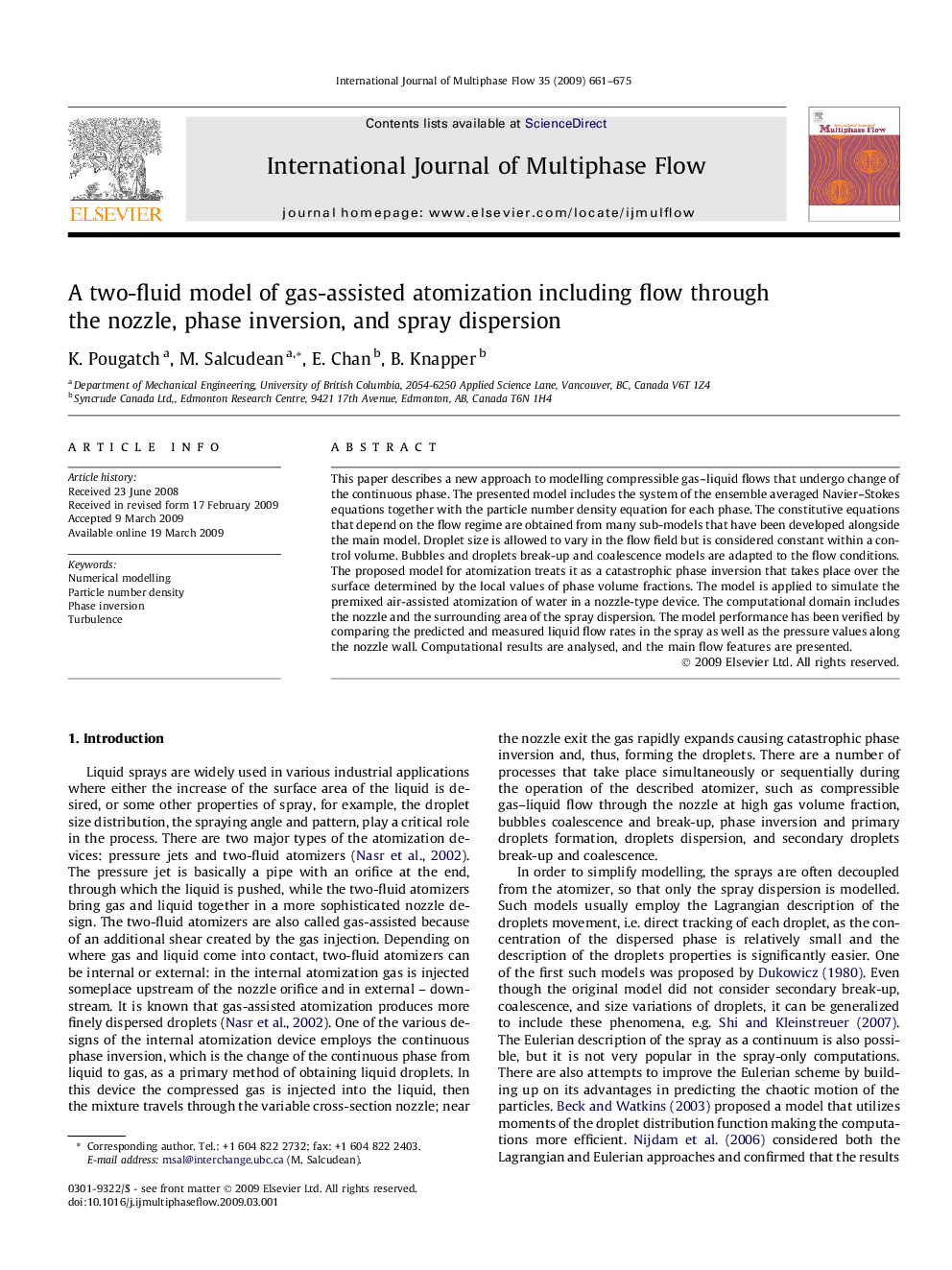| Article ID | Journal | Published Year | Pages | File Type |
|---|---|---|---|---|
| 667566 | International Journal of Multiphase Flow | 2009 | 15 Pages |
This paper describes a new approach to modelling compressible gas–liquid flows that undergo change of the continuous phase. The presented model includes the system of the ensemble averaged Navier–Stokes equations together with the particle number density equation for each phase. The constitutive equations that depend on the flow regime are obtained from many sub-models that have been developed alongside the main model. Droplet size is allowed to vary in the flow field but is considered constant within a control volume. Bubbles and droplets break-up and coalescence models are adapted to the flow conditions. The proposed model for atomization treats it as a catastrophic phase inversion that takes place over the surface determined by the local values of phase volume fractions. The model is applied to simulate the premixed air-assisted atomization of water in a nozzle-type device. The computational domain includes the nozzle and the surrounding area of the spray dispersion. The model performance has been verified by comparing the predicted and measured liquid flow rates in the spray as well as the pressure values along the nozzle wall. Computational results are analysed, and the main flow features are presented.
